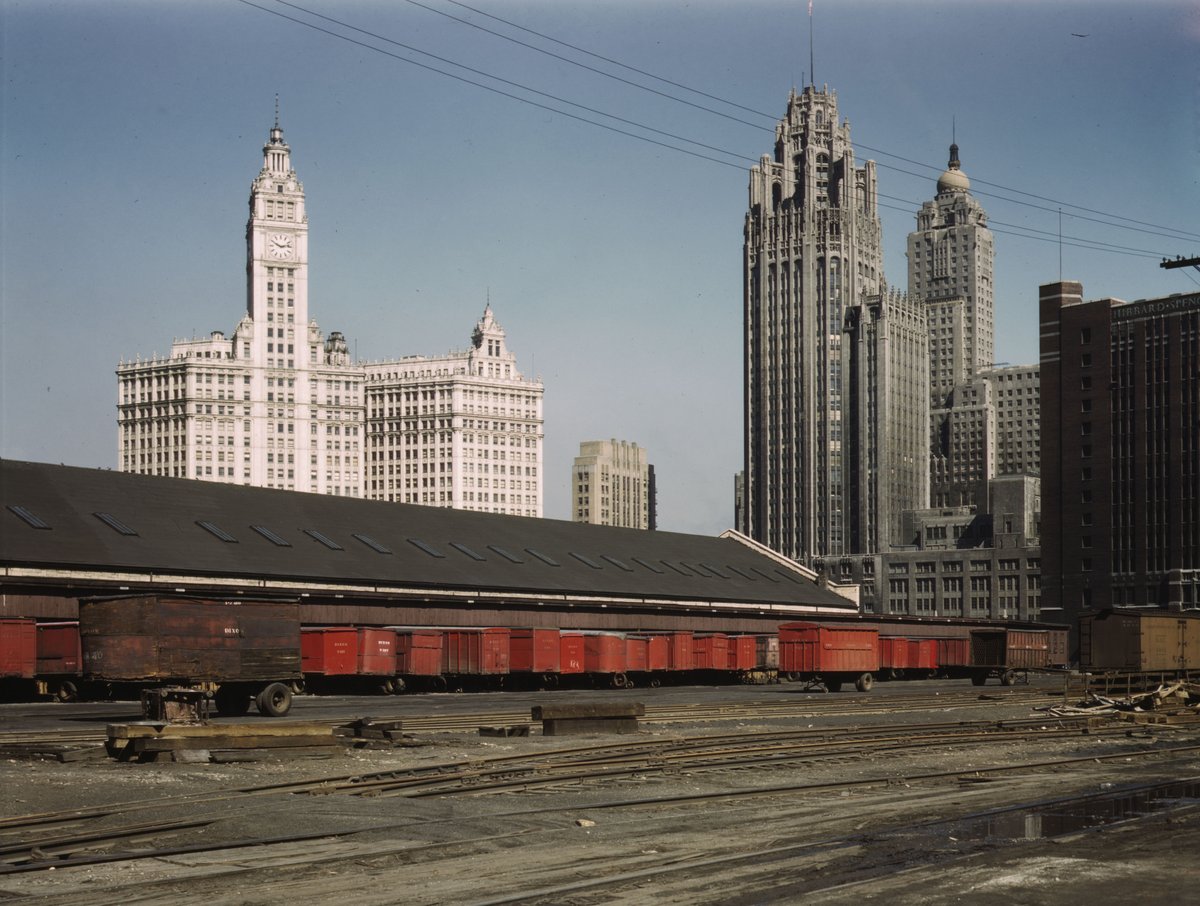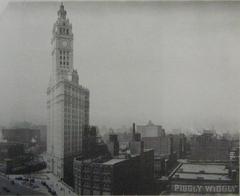
Wrigley Building Chicago: Visiting Hours, Tickets, and Historical Sites Guide
Date: 14/06/2025
Introduction
Nestled at 400–410 North Michigan Avenue, the Wrigley Building is a shimmering testament to Chicago’s architectural innovation and urban evolution. Commissioned by William Wrigley Jr., founder of the Wrigley Company, this iconic structure was envisioned as both a corporate headquarters and a symbol of the city’s ambition during its early 20th-century boom. With its luminous white terra cotta façade and a clock tower inspired by the Giralda of Seville Cathedral, the Wrigley Building quickly became a visual focal point on the Magnificent Mile and a catalyst for the development of the Near North Side.
Today, the Wrigley Building continues to enchant visitors with its architectural grandeur, historic significance, and prime location near Chicago’s top attractions. This guide provides all the essential details—visiting hours, ticketing, travel tips, photographic spots, and nearby sights—to help you make the most of your visit to this Chicago landmark.
For further background and resources, see Explore Chicago, Wikipedia, and the Chicago Architecture Center.
Table of Contents
- Early Origins and Vision
- Construction and Architectural Innovation
- Role in Chicago’s Urban Development
- Ownership, Restoration, and Preservation
- Architectural Features and Cultural Significance
- Visitor Information
- Notable Facts and Figures
- The Wrigley Building in the Modern Era
- Frequently Asked Questions (FAQ)
- Related Articles & Resources
- Summary and Key Visitor Tips
Early Origins and Vision
The Wrigley Building’s story is deeply connected to Chicago’s emergence as a commercial powerhouse in the early 1900s. William Wrigley Jr., already a household name thanks to his chewing gum empire, sought a headquarters that would reflect modernity and ambition. At the time, the north bank of the Chicago River was largely undeveloped. Wrigley’s bold decision to build there, even as the Michigan Avenue Bridge (now the DuSable Bridge) was still under construction, set the stage for the transformation of the area into the now-famous Magnificent Mile (art-facts.com; Wikipedia).
Construction and Architectural Innovation
Construction began in 1920 and was completed in two phases: the 30-story south tower in 1921, and the 21-story north tower in 1924. The design by Graham, Anderson, Probst & White drew inspiration from European towers, notably the Giralda of Seville, and incorporated French Renaissance and Spanish Colonial Revival features. The building’s façade is clad in over 250,000 glazed terra cotta tiles, which are hand-washed regularly to maintain their signature glow (WikiArquitectura; archdaily.com).
The south tower’s four clock faces, each nearly 20 feet in diameter, became instant landmarks. The innovative use of a concrete-encased steel frame allowed for greater height and stability, while the walkways connecting the two towers at the ground, third, and fourteenth floors were both functional and visually striking (Chicagology; Optima).
Role in Chicago’s Urban Development
The Wrigley Building’s completion marked a turning point for Chicago’s Near North Side. Strategically positioned just north of the river and across from the Tribune Tower, it helped establish the Magnificent Mile as a leading commercial and cultural corridor. The building’s proximity to Pioneer Court and other historic sites highlights its role as both a modern icon and a marker of the city’s founding history (art-facts.com).
Ownership, Restoration, and Preservation
Originally the Wrigley Company headquarters until 1977, the building changed ownership several times before being purchased by a group including Zeller Realty Group in 2011. This led to a major restoration, preserving its historic character while adding modern amenities like retail shops and a fitness center (Wikipedia; Goettsch Partners). In 2019, the building was acquired by Joe Mansueto, ensuring its continued stewardship and relevance. The Wrigley Building is now a protected landmark and vibrant hub for offices, retail, and events (exploreschicago.com).
Architectural Features and Cultural Significance
The Wrigley Building is instantly recognizable for its gleaming white terra cotta, ornate moldings, and green copper roof. The clock tower, modeled after Seville’s Giralda, is a nod to European grandeur, while the walkways between towers are uniquely Chicagoan. The building is frequently featured in films, literature, and city photography, especially illuminated at night (Chicago Architecture Center; WikiArquitectura).
Notably, the Wrigley Building was Chicago’s first fully air-conditioned office building—a remarkable innovation at its time (Wikipedia).
Visitor Information
Visiting Hours
- Lobby and Plaza: Open to the public Monday–Friday, 8:00 AM–6:00 PM.
- Evening Visits: The exterior is beautifully floodlit at night, making it a favorite for evening strolls and photography (Wrigley Building Official).
Tickets & Entry
- Admission: Free for lobby and plaza access. No public tours of upper floors or observation deck.
- Guided Tours: Available via local architecture tour companies; check with the Chicago Architecture Center and city tourism sites for availability.
Accessibility
- The building is fully accessible, with ramps and elevators serving all public areas. Assistance is available upon request.
Best Photographic Spots
- Michigan Avenue Bridge: Classic view of the building and clock tower.
- Plaza Between Towers: Offers unique angles and river views.
- Evening: For illuminated façade and dramatic skyline shots.
Travel Tips
- Take public transit to avoid parking hassles; the Grand (Red Line) and State/Lake (Brown, Green, Orange, Pink, and Purple Lines) stations are nearby.
- The area is generally safe and well-patrolled.
Notable Facts and Figures
- Construction period: 1920–1924
- Height: South tower—425 ft (130 m), 30 stories; North tower—21 stories
- Clock faces: Four, each nearly 20 ft in diameter
- Façade: Over 250,000 glazed terra cotta tiles
- Original cost: Over $1 million (1920s dollars)
- Landmark status: Part of the Michigan Avenue Landmark District
- Total area: 453,433 sq ft (42,125.3 m²)
- First air-conditioned office building in Chicago
(exploreschicago.com; Wikipedia)
The Wrigley Building in the Modern Era
Today, the Wrigley Building is not only a relic of Chicago’s past but a living part of its urban fabric. Its ground-level park offers tranquil river views, while retail and office spaces keep the building bustling. Its location adjacent to the Magnificent Mile and close to the Tribune Tower, Chicago Riverwalk, and Millennium Park makes it a must-see for anyone exploring Chicago (art-facts.com; Trip.com).
Ongoing preservation ensures the building remains a vibrant commercial and cultural landmark (Goettsch Partners).
Frequently Asked Questions (FAQ)
Q: What are the Wrigley Building visiting hours?
A: Monday through Friday, 8:00 AM–6:00 PM. Exterior views are available at all times.
Q: Is there an admission fee?
A: No, access to the lobby and plaza is free.
Q: Are guided tours available?
A: Yes, via external architecture tour companies. No public interior tours are offered by the building itself.
Q: Is the Wrigley Building wheelchair accessible?
A: Yes, the building is fully accessible.
Q: Where are the best photo spots?
A: Michigan Avenue Bridge, the plaza, and riverside walkways offer excellent views, especially at night.
Q: What nearby attractions should I visit?
A: Tribune Tower, Chicago Riverwalk, Millennium Park, and the Magnificent Mile are all close by.
Related Articles & Resources
- Official Wrigley Building Website
- Choose Chicago Tourism
- Chicago Architecture Center
- Chicago Landmark Report PDF
- Trip.com’s Wrigley Building Guide
Summary and Key Visitor Tips
The Wrigley Building remains a beacon of Chicago’s architectural legacy and urban spirit. Its gleaming façade, bold design, and technological innovation have made it a symbol of the city’s drive and creativity. Visitors can enjoy free access to the lobby and plaza, participate in guided tours through local providers, and explore nearby historic landmarks. For the best experience, visit during morning or evening hours, and don’t miss the illuminated building at night for memorable photographs.
To enrich your visit, check the official Wrigley Building website and consider downloading the Audiala app for self-guided audio tours and up-to-date event information. Follow official social media accounts for seasonal events and photo contests.
Sources
- Wrigley Building Chicago: Visiting Hours, Tickets, History, and Travel Guide, exploreschicago.com
- Wrigley Building, Wikipedia
- Wrigley Building Visiting Hours, Tickets & Architectural Significance: A Complete Guide to Chicago’s Historic Landmark, WikiArquitectura
- The Wrigley Building: Exploring Chicago’s Iconic Landmark, Visiting Hours, Tickets, and Nearby Attractions, Chicago.gov Landmark Report
- Chicago Architecture Center
- Wrigley Building Visiting Hours, Tickets, and Guide to Chicago’s Historic Landmark, Trip.com
- Choose Chicago Tourism
- Chicago Beautiful
- Optima, Chicago Skyscraper Spotlight: The Wrigley Building
- Chicagology
- Art-Facts.com, Wrigley Building Facts
- Goettsch Partners, Wrigley Building Restoration
Image suggestions:
- Wrigley Building illuminated at night with clock tower visible (alt: “Wrigley Building illuminated at night with clock tower”)
- Daylight view of Wrigley Building’s white terra cotta façade from Michigan Avenue Bridge (alt: “Wrigley Building Chicago white terra cotta façade from Michigan Avenue Bridge”)
- Plaza between towers with benches and visitors (alt: “Wrigley Building pedestrian plaza”)
- Map highlighting the building’s location on the Magnificent Mile






























































































































































